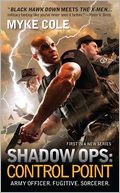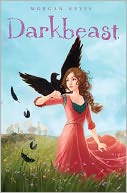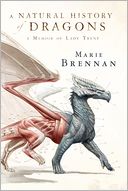I’m home from Fandom Fest (which was a lot of fun!), and will be heading up north for vacation tomorrow morning. So I’ve handed the blog over to a number of guest authors, starting with Myke Cole. Have a great week, and I’ll catch y’all when I get back!
Myke Cole (Twitter, Facebook) is the author of Shadow Ops: Control Point [Amazon | B&N | Mysterious Galaxy], a military fantasy novel I reviewed here. He’s also the dungeon master who, with the help of Saladin Ahmed, made me fight goblins in our game at ConFusion earlier this year. He also got to be a fighting extra on The Dark Knight Rises, making him far cooler than I will ever be. This piece is an expansion of an essay he wrote for The Qwillery.
#
Uniform in the Closet: Why Military SF’s Popularity Worries Me
Myke Cole
We’ve got this problem, and I think it’s pretty serious. There’s a growing gap between those who serve in uniform and those who don’t. It’s the worst kind of gap: experiential, cultural. It’s the kind of gap that gives rise to rumor and suspicion. The kind of gap that endures.
In May of last year, the Chairman of the Joint Chiefs of Staff, Admiral Mike Mullen, told the graduating class of West Point cadets that he was concerned about the growing gap between civilians and the military. In the United States, around 70% of youth are ineligible for military service due to health problems, criminal records, or other reasons. Of the remaining 30%, 99% elect not to serve. Currently, less than 1% of Americans serve in uniform. In a sour economy, recruitment soars, with a corresponding bump in educational and fitness standards, especially among the leadership. This makes the military, as it becomes more separate, more elite.
MSNBC’s Rachael Maddow addresses this question in her recent book, Drift. The New York Times’ Scott Shane summarizes her perspective:
“Only a tiny fraction of the American population serves or sends a family member to war, permitting a majority to remain oblivious to its grisly human price. . . . Contractors supply the battlefield support that once was the work of soldiers. A bloated security industry profits from the near-permanent state of conflict, sharing proceeds with pliable members of Congress. And now robotic drones carry out combat from an antiseptic distance.”
This is a serious problem, because America’s military is a citizen military. Our service members serve under the authority of civilians who are supposed to ultimately dictate policy derived from the vox populi of the American people. When the military fights, it does it for the royal you. That’s not the case in many countries. Look at Egypt or Burma, Guinea-Bissau or North Korea.
This is what has both Mullen and Maddow concerned. We don’t want to live in a country like that.
More importantly (as Maddow points out), having a military deeply integrated with the civilian population reminds everyone of the price of going to war, making it far more likely that we will do so only as a last resort. The bigger that experiential/cultural gap, the more likely Americans will simply shrug and accept that it’s time to lay down some ordnance. When the vast majority don’t have to buy war bonds, accept rationing, or offer up a family member, it’s an abstract, distant thing. A news item.
So, yeah. A problem. The genesis of the problem is a topic of much discussion in both civilian and military circles. The answer is complex, and like all cultural issues, will take a long time to resolve, but I am discouraged to see that the military’s own culture isn’t being examined in addressing it.
Let me get at it this way: We see members of the National Guard in their battle-rattle guarding train stations and airports. They are hidden behind tac-vests and magazines, Oakley Flak-Jacket sunglasses hiding their eyes. They look busy, alert. And they should. They’re guarding against threats. But when was the last time you saw a member of the military out to dinner, or the theater, or some public event in their dress uniform? Without a weapon? Not on Veteran’s Day or Memorial Day? Showing their service pride right alongside you?
There’s a great scene in a recent episode of Mad Men where Greg Harris (played by Samuel Page) has dinner out with his family. He sits in a crowded restaurant in his “Alphas,” (his service dress uniform) and tensely fights with his mother about his imminent return to Vietnam. It’s just a TV show, to be sure. But it’s one case where folks got the zeitgeist right. My parents regale me with stories of how service members used to wear their uniforms on every occasion that normally required a suit: Going out to the theatre, a fancy dinner, a formal party. Old movies feature plenty of scenes of servicemen donning dress uniforms to hop on a bus or plane.
You might still see that in Arlington, Virginia or Washington, DC. But what about in New York City? Or Billings, Montana? Or New Orleans? People never hesitate to thank me for my service once they find out that I have served. It’s inevitably followed by a slew of questions, interest and compassion. But finding it out in the first place is getting harder and harder.
And here’s where military culture comes in: There is a climate evolving that seeks to hide military membership. It’s largely driven by two concepts, both pushed to the forefront by the 9/11 attacks; “OPSEC” and “Force Protection.” It would put you to sleep to try and define them fully here (and hey, you’ve got Google and Wikipedia), but suffice to say that OPSEC culture attempts to protect sensitive military information (troop movements, ship and air schedules, etc . . .) and Force Protection tries to protect service members from terrorist attack (think, the USS Cole bombing). Both are genuinely important, both are needed.
Unfortunately, both are engorged by the panicked post 9/11 morass, the Clausewitzian fog of war that has us seeing terrorists and spies in every shadow. Both OPSEC and Force Protection seek, first and foremost, to protect the military by hiding it. Keeping a low profile is central to both cultures. OPSEC is centered around the concept that, if you are identified as a military member, you will be immediately targeted by those seeking sensitive information (state based spies, criminals, anti-government activists), smooth-talked, elicited from, eavesdropped on, blackmailed. Force Protection posits that a person in uniform will be grappled by a suicide bomber, knifed in a dark alley, pulled into a waiting van with blacked out windows. OPSEC forgets that sometimes the attractive foreign woman is chatting you up at a bar because she genuinely finds you attractive and is curious about you. Force Protection forgets that sometimes people take pictures of bridges and trains because they find them aesthetically beautiful.
And of course, like everything else in the military, contractors swoop in. Jobs are created. Training programs. Force Protection and OPSEC literature, PowerPoint presentations, degrees, classes, departments. Bureaucratic entities that, once created, will fight to sustain themselves at all costs.
Remember the “Loose Lips Sink Ships” campaign form World War II? An October 2010 Straight Dope piece put paid to that notion. Turns out that loose lips didn’t actually sink any ships. This in the middle of a major, existential struggle against an implacable enemy dedicated to our destruction. Yet the culture remains.
So, we have a hidden military. Wearing uniforms is discouraged off post. Showing one’s military ID is believed to invite either creeping spies or bloodthirsty terrorists. Force Protection and OPSEC moves the military into the shadows. Service members work, live and play alongside their civilian counterparts, and many of them don’t even know.
Those not in the military might be able to pick a service member out by a t-shirt slogan or bumper-sticker (I have been warned off both, by the way, in Force Protection and OPSEC briefings). But they mostly see and hear about military members in fictional accounts, news stories about PTSD related suicides, homicides. YouTube videos showing snapshots of firefights. Sensationalized accounts form tabloids. Wikileaks.
And, not surprisingly, stereotypes begin to evolve and blossom.
All stereotypes work this way: Without familiarity, whisper and rumor replace reality. Fighting men and women become the stuff of legends. It works the same way all stereotypes do: singular, easily recognized characteristics get taken, blown out of proportion, used to define an entire class of people. I knew this had reached epic proportions when the Shit my Dad Says meme finally reached us and the YouTube video Shit People Say to Veterans went viral. It was poking fun, to be sure, but we’ve all felt that wonder at the cluelessness of a public who seems not to know us at all.
But the real danger lies at the crossroads of exoticization and ignorance: The fetishization of a group of people. For one thing, discrimination (both positive and negative) against people is always presaged by this. If you don’t believe me, go check out the wild distortions currently used as the justification for the relentless persecution of homosexuals in Uganda. But in the case of our military, it has more ominous implications. We have become the newest minority, with all the ignorant and dangerous stereotypes that status affords.
So what does all this have to do with military science fiction?
Military science fiction and fantasy, as a sub genre, is a mainstay. From Heinlein to Weber to Ringo to Haldeman to newcomers like T.C. McCarthy, genre books dealing with the military fly off the shelves. Heck, publishers like Baen practically stake their whole business on it. A lot of the newer, edgier fantasy hitting the market these days has a military cast to it (Joe Abercrombie’s work deals largely with medieval warbands, the military of their time. George R. R. Martin’s A Song of Ice and Fire is a decidedly military epic in many respects). That’s not even counting the movies. Battle: LA, Lockout, Battleship, Act of Valor. Dynamite Comics recently released short digital novels by Chuck Dixon (of Batman fame). The topic? SEAL Team Six. The last time I checked, the first volume was #643 (out of over 700,00) in the Kindle store and #24 in the Action and Adventure category.
And I started thinking about why. Military stories have always been popular, but why are people buying them now? What is it about today’s military service that folks find so fascinating? The answer is deeply troubling. This is the culture gap in action. People are fascinated with the modern military precisely because they are disconnected from it. Like people flocking to the zoo to see the rare Siberian Tiger, they are drawn to military speculative fiction by the sense of wonder that comes from experiencing the rare, the different, the exotic.
And in this case, that’s a serious problem.
Familiarity and kinship with a military is critical to ensuring it remains a servant of civilian masters and their policy. All military members must remember that, they too, are civilians. When they get home from work and take off their uniforms, they shop and play and raise their kids in the midst of everyone else. Distance breeds fantasy and mistrust. A military punctuated by the uneasy humor of that YouTube video. A civilian population unsure of what a man or woman in uniform, suffering from PTSD, might do to them if they get too close.
 I am a writer of military stories. I want people to be interested in them. But I can’t shake the unease that my readers are drawn at least in part from a fascination with a culture that seems exotic because it has been made distant by the measures put in place to protect its members.
I am a writer of military stories. I want people to be interested in them. But I can’t shake the unease that my readers are drawn at least in part from a fascination with a culture that seems exotic because it has been made distant by the measures put in place to protect its members.
The healthiest relationship between a military and civilian populace is one of tight integration. The message I’d like to see repeated is “We are you, and you are us.” It is the best way to ensure that the military remains an instrument of civilian policy, and never a force for setting it.
It’s my sincere hope that interest in military science fiction (and fantasy) will move beyond a fascination with the other. The real military is a cross-section of all of American society. We have mavericks and hidebound rules-lawyers. We have lockstep loyalists and anti-authoritarians. We have heterosexuals and homosexuals. We have artists, dreamers and intellectuals. If you see it out there, it’s in here. We are you, and you are us. That depth and complexity of character makes for the best writing in any genre. Here’s hoping we’ll see more of it in military speculative fiction, and that the sub-genre can be used as a tool to bridge the gap that Mullen and Maddow have described.






 A couple of months ago, I put the finishing touches on DARKBEAST, a middle grade fantasy novel that will be coming out at the end of August under the pen name Morgan Keyes. To get the book completely “put to bed” I spent months living the story, breathing its details, dreaming its myriad plots and twists. When I turned in the very last, absolutely-final, not-going-to-change-a-word edits, I found myself rather … empty.
A couple of months ago, I put the finishing touches on DARKBEAST, a middle grade fantasy novel that will be coming out at the end of August under the pen name Morgan Keyes. To get the book completely “put to bed” I spent months living the story, breathing its details, dreaming its myriad plots and twists. When I turned in the very last, absolutely-final, not-going-to-change-a-word edits, I found myself rather … empty. I’ve reviewed a number of
I’ve reviewed a number of  Every town has a homeless scene. I’ve become adept at spotting it now. Like a magician, Sasha has made the unseen fully visible to me. The restaurant where people come for food. The dumpster where people go to scavenge. The building where they go to sleep. The teenager/woman/man heading down the sidewalk, trying to look like they have somewhere to go.
Every town has a homeless scene. I’ve become adept at spotting it now. Like a magician, Sasha has made the unseen fully visible to me. The restaurant where people come for food. The dumpster where people go to scavenge. The building where they go to sleep. The teenager/woman/man heading down the sidewalk, trying to look like they have somewhere to go. David Constantine is the author of steampunk/alternative history THE PILLARS OF HERCULES (Night Shade Books, March 2012), and can be found on the web at
David Constantine is the author of steampunk/alternative history THE PILLARS OF HERCULES (Night Shade Books, March 2012), and can be found on the web at 
 I am a writer of military stories. I want people to be interested in them. But I can’t shake the unease that my readers are drawn at least in part from a fascination with a culture that seems exotic because it has been made distant by the measures put in place to protect its members.
I am a writer of military stories. I want people to be interested in them. But I can’t shake the unease that my readers are drawn at least in part from a fascination with a culture that seems exotic because it has been made distant by the measures put in place to protect its members.